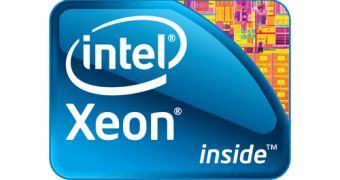Santa Clara, California-based Intel, the world's leading vendor of computer processors, has recently announced that it will update its portfolio with a new platform, specifically designed to meet the performance-requirements of scientists, researchers, and engineers. The new HPC (high performance computing) platform is scheduled for release in the first half of 2010, with the introduction of the chip maker's next-generation of Nehalem processors, the Nehalem-EX.
Featuring a six-core architecture, the upcoming processors will be designed to provide costumers with higher core frequencies than eight-core versions of the Nehalem-EX CPUs, offering advantages for some HPC workloads. According to available details, the new platform will provide customers with support for greater memory bandwidth and capacity. In addition, these six-core processors will be available in systems featuring up to 256 of these processors, consequently enabling a high level of performance.
In a recent press statement, talking about the company's results in the supercomputing industry, according to the recently updated list of TOP 500 supercomputers, the chip maker also announced that a new beta program for its Ct technology would be made available before the end of this year. This technology is essentially designed to enable an easier implementation of parallel programming in C and C++ languages, by automatically parallelizing code across multi-core and many-core processors, according to Intel.
“With the industry's rapid adoption of the Intel Xeon processor 5500 series processor, Intel has more systems than ever on the Linpack benchmark-based Top500 list,” said Richard Dracott, general manager of Intel's High Performance Computing Group. “We're even more elated that customers are choosing our Xeon processor products not only for Linpack scores, but also because of the exceptional application performance delivered across a wide range of real-world workloads found in energy exploration, science research and 3-D Internet.”
In related news, Intel's processors have been found inside 402 of the world's top 500 supercomputing systems, according to the aforementioned Top 500 Supercomputing List of the world's most powerful computers. Intel's chips are inside 20 of the top 50 systems, with quad-core Xeon-powered systems accounting for 379 spots. Meanwhile, competitor AMD and its Opteron processors, is inside four of the top 5 supercomputers, according to the said list.

 14 DAY TRIAL //
14 DAY TRIAL //